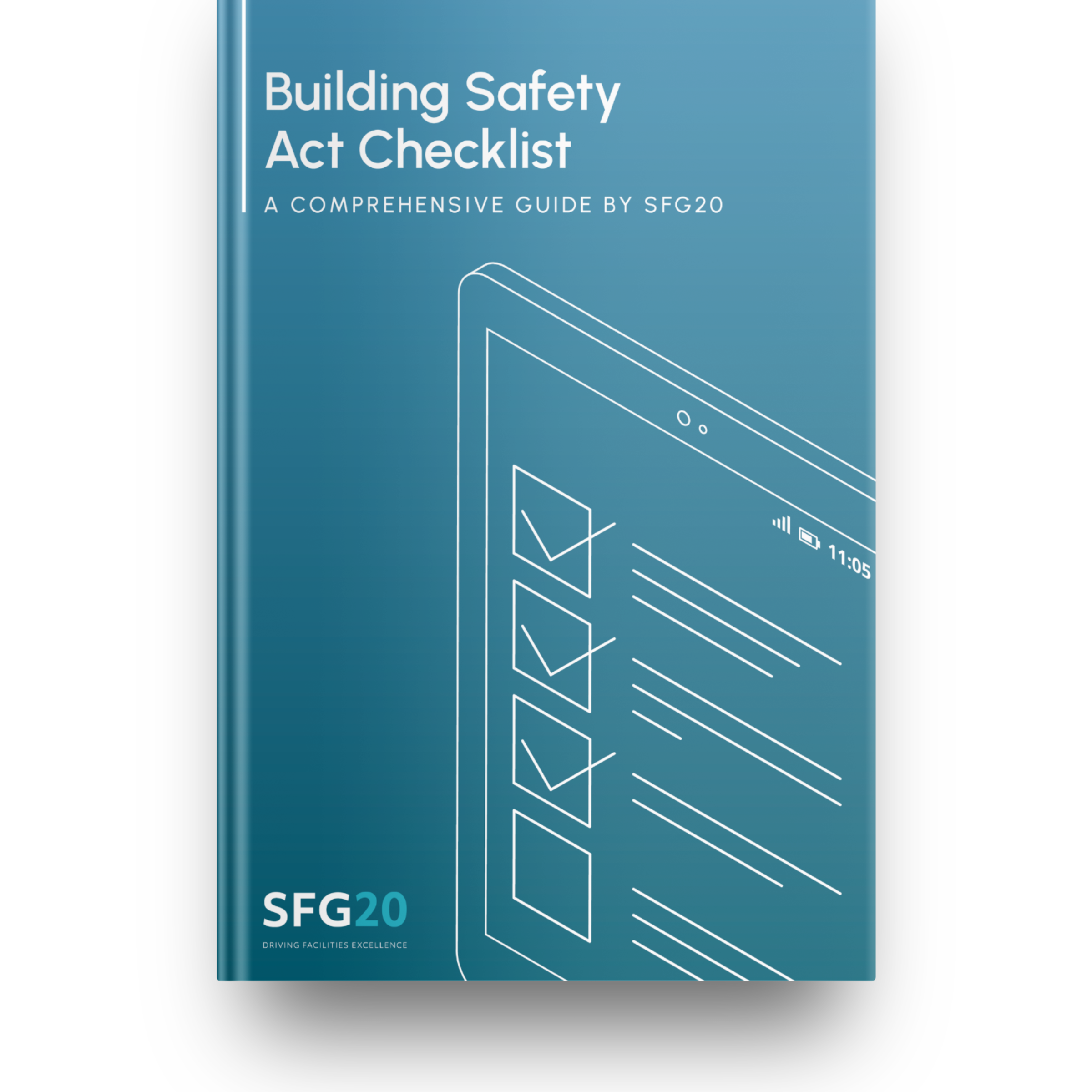Ensure your maintenance complies with the Building Safety Act 2022
In a hurry, why not download the audio version and listen later?
Faced with a barrage of new legislation and regulation, it is not surprising that many landlords and property managers are anxious about their ability to cope and make sure their buildings are compliant, especially when there are so many other issues, like energy costs, to worry about.
The latest legislation and regulation include
Fire Safety (England) Regulations which came into force on January 23rd and include stringent new legal requirements for anyone responsible for fire safety in higher-risk residential buildings (HRRBs). This underlined a challenging start to 2023 following three other significant legislative and new regulatory changes in the shape of the Fire Safety Act 2021, the Building Safety Act 2022 - which received royal assent on 28 April 2022 - and updates to Part B of the Building Regulations.
Following the Grenfell Tower tragedy, the regulations close several important loopholes relating to building safety risks, including the introduction of a stricter regime for checking fire doors and a requirement to improve the information relating to the building provided to residents. They also place greater responsibilities on building duty holders to produce detailed documentation covering external wall design, floor and building plans, along with a fire safety strategy, which must be available to residents and the fire service.
To comply with the new Building Safety Act, the Facility Management sector must absorb a significant amount of new legislation into their day-to-day operations, which has led to legitimate concerns within the industry over their ability to do so.

New Building Safety Regulator
It is a legal requirement under the Building Safety Act 2022 that all high-rise residential buildings 18 metres tall or higher, or at least 7 storeys tall, with two or more residential units need to be registered with the Building Safety Regulator by 1 October 2023.
It can be tempting to take a ‘head in the sand’ approach when confronted with the sheer volume of detailed change - with secondary legislation on the Building Safety Act still to come - but inaction is not an option. The government has been clear that the rules will not be confined to high rise residential buildings ,and the scope of the act will eventually be extended to all types of buildings and homes across the country.
The new Building Safety Regulator (BSR) will oversee the safety and performance of both new and legacy buildings. Created by the Health and Safety Executive (HSE), the BSR has considerable enforcement powers and is there to ensure standards are adhered to and to enforce these new regulations.

Creating the golden thread of information about a building
The golden thread of information demonstrates a building’s compliance through its various life stages, from design through to operation and maintenance and should be held in a digital format that can be accessed readily by those who need it e.g., building managers, architects, contractors etc. Furthermore, information from the golden thread must also be shared by the Accountable Person with other relevant people, including residents and emergency responders.
If you feel like you’re constantly playing catch-up with new legislation and regulation, SFG20 can support you with up-to-date guidance around what maintenance tasks need to be performed, by whom and how often.
The technical team behind SFG20 – the industry standard for building maintenance specification - has already analysed all new pieces of legislation and regulation in detail and identified what a building owner, property manager or building user needs to do to ensure compliance with all the recent legislative changes.
Specific maintenance tasks have been added into the SFG20 library of cloud-based maintenance instruction sets, which include additional items such as providing a secure information box, wayfinding signage, evacuation alert system and a fire safety management plan.
Importantly, the guidance includes the skillsets required to complete each maintenance task, which means users can evidence competence easily, which is a critical aspect of the Building Safety Act.
This benefits SFG20 users by providing peace of mind that all maintenance carried out in accordance with the guidance is in line with relevant laws.
Users can create a digital trail of the maintenance work that has been carried out, thereby creating a golden thread of information about the building.

Download the SFG20 Building Safety Act 2022 checklist
- Get started with this guide that provides practical guidance to help you on your journey to full compliance with building safety legislation.
- Prepare yourself for the biggest change to building safety in decades, which gives residents and homeowners more rights.
- Discover more about the new legislation and new requirements for higher risk buildings in scope, which include high-rise buildings that fulfil the height criteria of 18 metres (or seven storeys) or more and have at least two residential units.
- Ensure you have the correct measures in place to manage your maintenance compliantly and that standards and guidance are adhered to.
- Understand what building information needs to be collated and stored throughout the life of the building.

Download your copy of SGF20's Building Safety Act Checklist
Does your building falls in scope of the Building Safety Act?
Please answer the questions below
SFG20 was created by FM experts for the built environment industry
- Since launch in 1990, SFG20 has evolved into a highly sophisticated and customisable online system used by the built environment industry.
- The library of over 2000 cloud-based maintenance task instruction sets covers more than 70 different asset types.
- Maintenance schedules are colour-coded by criticality, so users can see if they have fallen behind on any statutory or compliance-critical maintenance. This is hugely valuable peace of mind at a time when keeping buildings operating safely and efficiently has never been under greater scrutiny.
- Rather than having to wade through all the details of the regulatory regime yourself, the SFG20 team of technical authors do the work for you and identify the changes and key responsibilities that need to be included in your maintenance regime to ensure building safety and improve performance of all buildings.

What to expect from an SFG20 demonstration
- To meet a friendly, professional product expert
- To have a tailored demonstration focusing on the functionality that will benefit you the most
- To spend approximately 30 minutes with a team member and learn how SFG20 can solve your specific challenges
What NOT to expect:
- No hard sell!
- No monologues!
- No lengthy product demonstration!